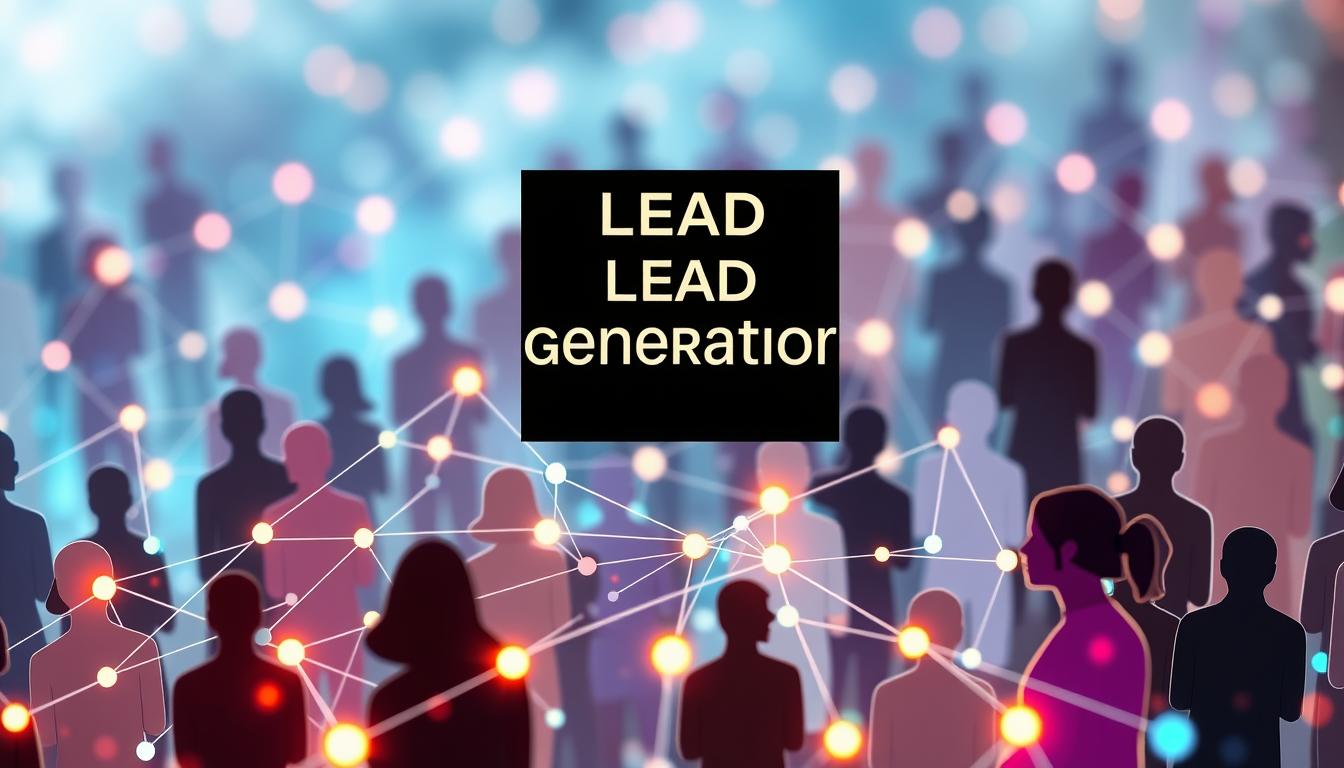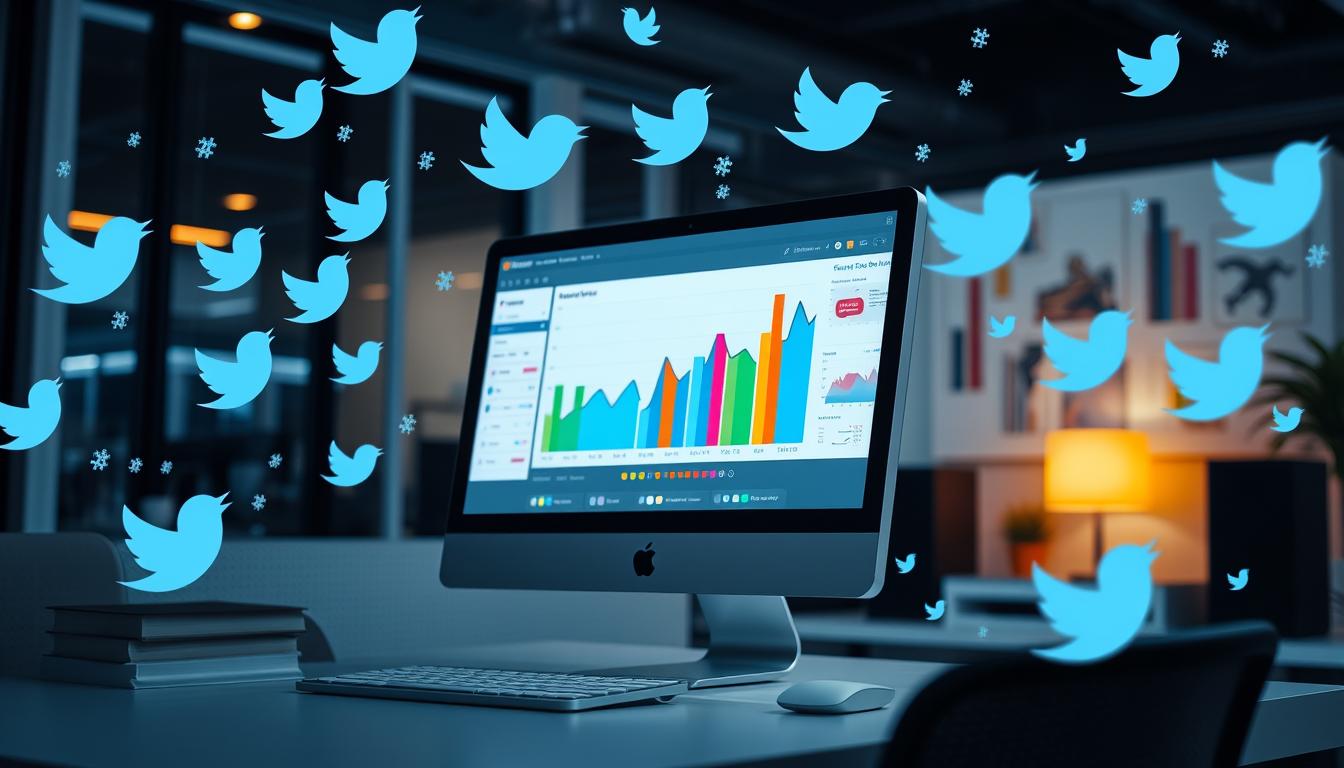Facebook groups are an important space for community building and brand engagement. Using a Facebook group monitoring tool can help admins keep track of interactions, manage members, and analyze engagement effectively. These tools offer essential features that optimize the group experience, making it easier for admins to focus on meaningful interactions.

As the landscape of social media continues to evolve, understanding the role of monitoring tools becomes crucial for successful group management. These tools not only streamline administrative tasks but also provide valuable insights that can inform marketing strategies and enhance group dynamics. By leveraging the right monitoring tool, group managers can foster a vibrant community that thrives on interaction and support.
With numerous options available, selecting the right tool can seem overwhelming. However, by focusing on key functionalities, such as analytics and integration capabilities, individuals can find a solution that best meets their unique needs. Harnessing the power of these tools enables group administrators to maximize engagement and foster growth.
Key Takeaways
- Monitoring tools streamline group management tasks for better engagement.
- Analytics provide insights that guide marketing strategies effectively.
- Choosing the right tool enhances community interaction and support.
Understanding Facebook Group Monitoring

Facebook group monitoring is essential for community management. It helps moderators and admins track member engagement and identify active participants.
By using monitoring tools, they can analyze trends within the group. This includes knowing when members are most active and what topics generate the most discussion.
Key benefits of monitoring include:
- Engagement Tracking: Understanding how often members interact can guide content creation.
- Keyword Monitoring: Admins can set alerts for specific keywords, allowing them to respond quickly to relevant discussions.
- Member Insights: Identifying top contributors can help admins recognize and reward active members.
Effective monitoring aids in maintaining a positive environment. It allows for early detection of potential issues, enabling quick intervention.
Tools like Pinchr help streamline the monitoring process. They offer simple features suitable for small businesses.
Using Facebook Group Insights is another way to gather data. Insights provide valuable metrics about members and activity levels.
Overall, Facebook group monitoring supports community growth and helps maintain engagement. By understanding member behavior, admins can create a space that fosters interaction and loyalty.
Key Features of Facebook Group Monitoring Tools

Facebook group monitoring tools offer essential features to help users manage engagement, track performance, and enhance community growth. These tools simplify the process of monitoring posts, automating tasks, and analyzing data effectively.
Real-Time Keyword Alerts
Real-time keyword alerts notify users immediately when specific keywords are mentioned in their Facebook groups. This feature is crucial for monitoring discussions that relate to a brand, product, or topic of interest. Users can set up alerts for various keywords to ensure they do not miss any important conversations.
For example, if a community is discussing a company’s new product launch, the monitoring tool can send instant notifications. With this quick access to relevant discussions, users can engage with members promptly, address concerns, and seize opportunities to connect with potential customers.
Automated Moderation Capabilities
Automated moderation capabilities streamline group management by enabling tools to filter and manage posts efficiently. They can automatically approve, reject, or flag content based on preset criteria. This feature helps maintain a positive and safe environment for all members.
By using automated moderation, users can reduce the time spent reviewing posts manually. This efficiency allows community managers to focus on fostering engagement rather than sifting through countless posts. Many tools also offer customizable settings, allowing users to adjust moderation rules to fit their group’s specific needs.
Content and Post Scheduling
Content and post scheduling features enable users to plan their posts in advance. This is especially beneficial for businesses looking to maintain consistent interaction without constant monitoring. Users can create a content calendar, ensuring that relevant topics are addressed at optimal times.
These tools often integrate with platforms like Facebook Creator Studio, making it easier to schedule and manage posts across multiple groups. By planning content ahead, users can enhance engagement and ensure that their posts reach the audience when they are most active.
Advanced Analytics and Reports
Advanced analytics and reports provide users with detailed insights into group performance and member engagement. These analytics can reveal growth data, highlight popular posts, and track member interactions over time. Understanding these metrics helps users identify trends and adjust their strategies accordingly.
Tools may offer visual reports highlighting key performance indicators, such as post reach, likes, and comments. This data allows users to make informed decisions about upcoming content and optimize their engagement strategies, ultimately driving better results in their Facebook groups.
Maximizing Engagement and Growth

To achieve success in Facebook groups, it is essential to focus on engagement and growth. Understanding group insights, targeting the right audience, and implementing effective content strategies can significantly enhance community interaction and expand membership.
Leveraging Facebook Group Insights
Facebook group insights offer valuable data on member activity and engagement trends. By regularly reviewing these metrics, group managers can identify what content resonates most with members.
Key insights include:
- Member Growth: Track the number of new members over time.
- Post Engagement: Monitor likes, comments, and shares to gauge interest.
- Active Hours: Determine when members are most active to time posts effectively.
Using this information allows group managers to tailor their content strategy, fostering a more engaging environment.
Targeting and Understanding Your Audience
A deep understanding of the target audience enhances engagement within the group. Group managers must identify the demographics and interests of their members.
To do this effectively, they can:
- Create Member Profiles: Document member interests and feedback.
- Use Polls: Gather opinions on topics members care about.
- Engage Directly: Encourage members to share their thoughts and experiences.
Targeting content based on audience preferences leads to more engaged discussions and a sense of belonging.
Content Strategies for Active Community Building
Creating compelling content is vital for maintaining an active Facebook group. Group managers should consider a variety of content types to keep engagement high.
Effective strategies include:
- Regular Updates: Share news, tips, or relevant articles that align with group interests.
- Interactive Posts: Use questions, polls, and challenges to prompt responses.
- Visual Content: Incorporate images, videos, and infographics to capture attention.
By consistently providing valuable and engaging content, managers can foster a vibrant community that encourages ongoing participation.
Exploring Top Facebook Group Monitoring Tools

Monitoring Facebook groups effectively requires the right tools. Several popular options cater to different needs, allowing users to track engagement, gather insights, and manage content efficiently.
Groouply and Grytics
Groouply offers a user-friendly interface designed to help administrators manage their Facebook groups efficiently. It provides tools for tracking member activity, engagement levels, and content performance. This allows users to tailor their strategies based on real-time data.
Grytics serves as a powerful analytics tool for Facebook groups. It helps users analyze member interactions and can generate reports on various metrics such as growth trends and post engagement. By using Grytics, group managers can identify which content resonates most with their audience and adjust their strategies accordingly.
Groupstracker and Pinchr
Groupstracker focuses on streamlining the monitoring process by providing detailed insights into group dynamics. It allows users to track key metrics like member participation and how often posts are shared. This can help administrators promote more engaging content.
Pinchr, on the other hand, is a cost-effective option perfect for small businesses. It enables users to manage their Facebook groups directly through its website or app. Pinchr emphasizes simple monitoring features, allowing users to keep an eye on conversations and member interactions without becoming overwhelmed by data.
Social Fixer and Devi AI
Social Fixer is a versatile tool that enhances the Facebook user experience by allowing users to customize their feeds and monitor group activity. Users can filter content based on their interests, making it easier to engage with relevant posts.
Devi AI brings automation to the monitoring process. It tracks keywords across Facebook groups and produces content suggestions based on trends. This tool can save significant time, allowing users to focus on important conversations rather than searching for relevant leads manually.
The Role of Analytics in Group Monitoring

Analytics play a critical role in monitoring Facebook groups. They provide valuable insights into member engagement, growth trends, and competitive positioning. By understanding these elements, group administrators can make informed decisions to enhance community interaction.
Understanding Metrics and Growth Data
Metrics are essential for evaluating the health of a Facebook group. Key metrics include member growth, post engagement, and demographics.
- Member Growth: Tracking the increase in members helps identify successful periods and strategy adjustments.
- Engagement Rates: Understanding how often members interact with posts reveals content effectiveness.
- Demographic Insights: Knowing the age, gender, and location of members allows for tailored content.
Using Facebook Insights, administrators can observe patterns in member activity. This data is crucial for adapting strategies to keep the community vibrant.
Reports generated from these metrics can guide future content and engagement tactics. Group managers can focus on peak activity times and favored content types, ensuring better member satisfaction.
Competitive Analysis and Industry Benchmarks
Competitive analysis involves comparing group metrics with those of similar communities. It helps identify gaps and opportunities for improvement.
- Industry Benchmarks: Understanding average engagement rates in comparable groups can set realistic goals.
- Competitor Tracking: By monitoring competitors, group administrators can learn from their successes and mistakes.
Analyzing trends in competitors’ growth and engagement provides insights that can be applied to one’s own group.
Using Facebook analytics tools, administrators can create reports that highlight these insights. They can track how their group ranks against peers in terms of engagement and growth.
Integrating Monitoring Tools with Marketing Strategies

Incorporating monitoring tools into marketing strategies enhances social media campaigns and improves advertising effectiveness. These tools provide valuable insights, allowing businesses to make data-driven decisions that align with their goals.
Seamless Social Media Campaigns
Social media marketing thrives when campaigns are data-informed. Monitoring tools enable businesses to track engagement metrics and audience sentiment in real time.
By analyzing feedback from Facebook groups, companies can:
- Adjust messaging to suit audience preferences.
- Identify trending topics that resonate with potential customers.
- Optimize posting schedules based on peak user engagement.
This integration leads to more coherent marketing strategies, as businesses can quickly pivot their approaches based on observed data.
Furthermore, using monitoring tools helps businesses connect with their audience directly, fostering stronger community relationships.
Impact on Advertising ROI and Goals
Monitoring tools play a crucial role in measuring advertising success. They provide key performance indicators (KPIs) that inform ROI calculations.
By focusing on specific goals, such as:
- Increasing brand awareness
- Generating leads
- Boosting sales
Businesses can assess the effectiveness of their advertising campaigns.
With accurate data, companies can refine their advertising strategies, ensuring that resources are allocated effectively.
These tools also allow for ongoing testing and adjustments, making it possible to maximize returns and achieve set objectives.
As a result, a strong integration of monitoring tools into the marketing strategy leads to improved outcomes and a more profitable business model.
Best Practices for Facebook Group Admins and Moderators

Effective management of Facebook groups requires clear guidelines, active member engagement, and strategies for handling issues that may arise. Admins and moderators should focus on creating a positive community by following best practices tailored to their specific needs.
Moderation and Community Guidelines
Establishing clear community guidelines is essential for maintaining a respectful environment. Admins should define acceptable behavior and specific rules for posting, commenting, and interaction. These guidelines should be easy to find and visible to all members.
Moderators play a crucial role in enforcing these rules. They can monitor posts for inappropriate content or spam and remove harmful comments. By actively moderating discussions, they can prevent conflicts and maintain the group’s focus.
It is also helpful to regularly update the guidelines based on community feedback. This keeps the rules relevant and shows members that their opinions matter.
Member Engagement and Response Tactics
Engaging members is vital for a thriving community. Admins can encourage participation by hosting polls, asking questions, and regularly sharing content that sparks conversation. Acknowledging members’ contributions creates a sense of belonging.
Response tactics are equally important. Admins and moderators should reply promptly to comments and messages. This not only improves customer service but also shows that the admin values member input. Creating a welcoming tone invites more interaction and builds trust.
Admins can also spotlight active members by recognizing their contributions. This practice fosters loyalty and motivates others to engage more.
Handling Negative Comments and Brand Reputation
Negative comments can pose a challenge, but with the right approach, they can be managed effectively. Admins should remain calm and not take criticism personally. It is important to respond quickly to negative feedback while maintaining a professional tone.
Addressing issues openly shows the community that the admin is committed to improvement. If a comment is particularly damaging, the admin may need to take the conversation offline or address it in a private message.
Monitoring brand reputation is crucial in this context. Regularly assessing member sentiments and feedback helps identify potential problems early. By fostering a positive environment and addressing issues promptly, admins can strengthen their group’s reputation.
The Future of Facebook Group Monitoring

The future of Facebook group monitoring is shaped by emerging trends and technology. As social media continues to evolve, tools will become more sophisticated.
AI content generators are on the rise. They will help users create and curate relevant content for their groups. This leads to more engaging conversations.
Social listening will also play a key role. Businesses can track keywords and trends within groups. They can gather valuable insights about what members are discussing.
As monitoring tools advance, they will enable better interaction with influencers. These tools will help brands identify potential partnerships within their communities. Knowing who to engage with can enhance marketing strategies.
Data analytics will become more important too. By analyzing engagement metrics, groups can understand their audience better. This knowledge will drive targeted content and discussions.
The integration of technology means automated monitoring will save time. Tools can track multiple groups effortlessly. This allows users to focus on strategy rather than manual oversight.
Finally, the demand for effective monitoring tools will grow. Companies will seek solutions that can simplify their social media efforts. In this landscape, those who adapt will thrive as community engagement becomes a critical aspect of success.
Frequently Asked Questions

Monitoring Facebook groups effectively requires understanding specific tools and options available. Below are common questions that can help clarify key aspects of Facebook group monitoring.
What features should I look for in a Facebook group monitoring tool?
Users should consider tools that offer real-time tracking, keyword monitoring, and sentiment analysis. Features like notifications for new posts and comments are also valuable. Additionally, an intuitive dashboard can help simplify the monitoring process.
Are there any free tools available for tracking activity in Facebook groups?
Several tools offer free plans or trials for tracking Facebook group activity. These options may have limitations on feature access or the number of groups monitored. Users can explore these free tools to see if they meet their needs before committing to a paid plan.
How can I monitor keywords in a Facebook group to stay updated on specific topics?
Monitoring keywords can be done using specialized tools that provide real-time tracking. Users can set up alerts for specific keywords to receive notifications when those terms are mentioned in posts or comments. This process helps keep users informed on relevant discussions.
What are the capabilities of admin tools in managing and monitoring Facebook groups?
Admin tools often include options to manage member approvals, post scheduling, and content moderation. These tools can also provide insights into member engagement and activity trends. Effective use of these features can enhance group management and member interaction.
What is the most efficient way to track participant engagement in a Facebook group?
Tracking engagement can be achieved through analytics provided by monitoring tools. Users can look for metrics like post interactions, comment rates, and active member counts. These insights allow for better understanding of how participants are engaging with the content.
How do social media monitoring tools vary, and which ones are considered best for Facebook groups?
Social media monitoring tools vary in features, pricing, and usability. Some tools focus specifically on Facebook, while others cover multiple platforms. Popular options for Facebook groups include those that offer tailored features like keyword tracking and sentiment analysis, ensuring they fit user needs effectively.




